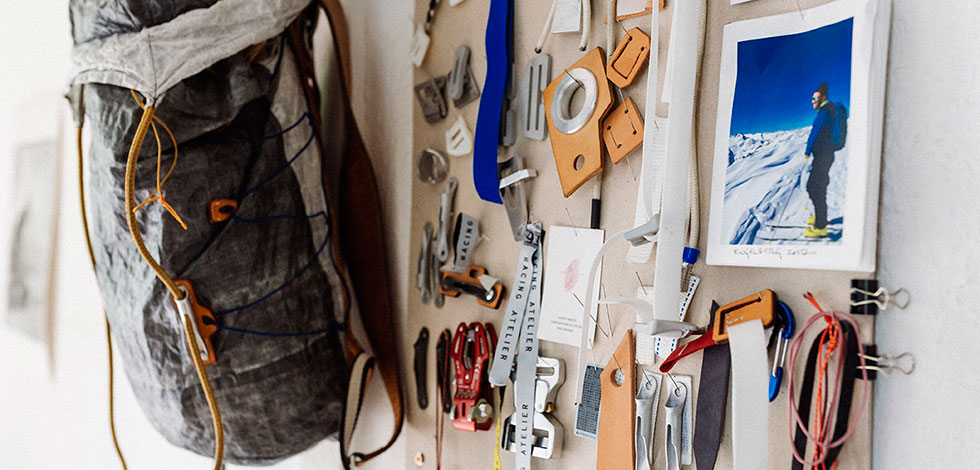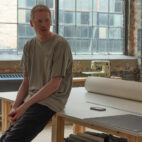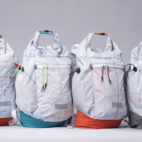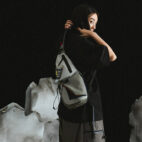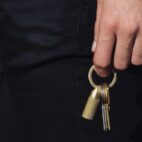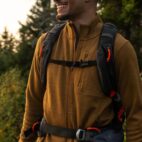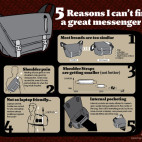5 Minutes with Racing Atelier
Racing Atelier may be a brand unfamiliar to some, but nestled deep within the Bavarian Alps, this small team of designers are experimenting, building, and refining hard-wearing handmade objects at the intersection of old-world craft and innovation. Built to age well and designed to turn heads, Racing Atelier are honoring the past by moving forward into the future of pack making. We sat down with the crew to learn more.
Who are you: tell us a little backstory about yourself?
My name is Leander Angerer. I was born and raised in the Bavarian Alps. My mom is a master in pottery and my dad an artist. Spending time outdoors, be it mountain biking, hiking or skiing or in my parents’ workshops heavily influenced my life and my interests.
Through studying Design in Dessau (Germany) and at Central Saint Martins in London for an MA I have honed my interest in design. Especially in London where I examined the contrast between urban and rural life for my MA project, as well as for me personally I found my take on design – mostly product design.
After having worked as a designer for hardware at VAUDE GmbH, focusing on backpacks, sleeping mats etc., I have now developed RACING ATELIER as a studio providing Rucksack#1 as my own product and design services as a freelance designer to clients.
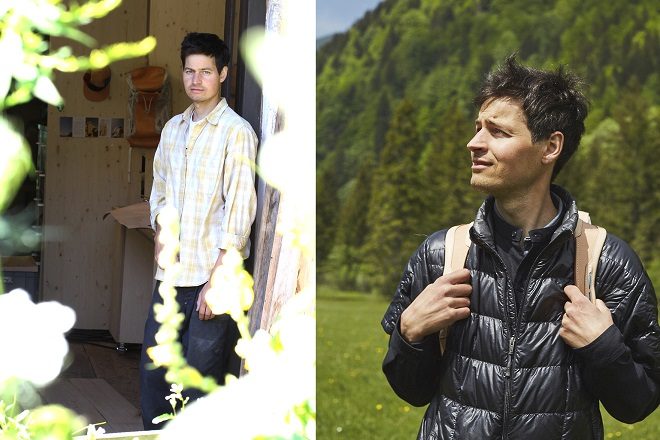
What are the origins of Racing Atelier?
RACING ATELIER originates from a history in MTB racing together with my older brother Leonhard. Racing on a professional level meant spending a lot of time in the workshop. At some point we called our workshop the RACING ATELIER. Since then, anything that was created in our workshop, be it for fun, purely for personal interest or commercial is labelled with RACING ATELIER. It only seems natural to use this name for the studio for professional work. Leonhard works as a designer as well and is still heavily involved in the RACING ATELIER, especially developing the more technical things we need like our custom aluminium tension locks or lid closures. Also in regards to prototyping and tooling Leonhard’s experience as an industrial designer plays an important role when we develop our products.
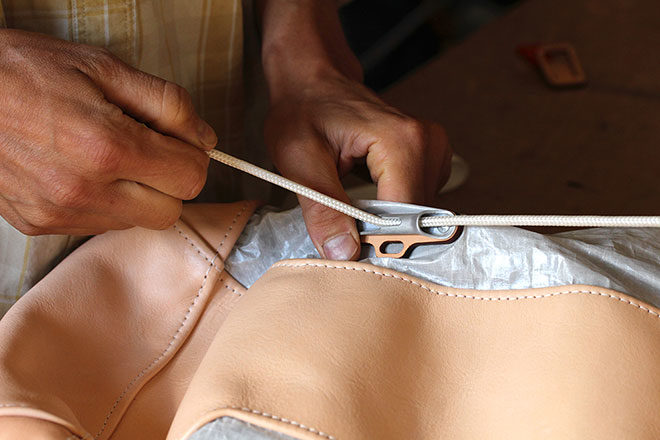
You guys work exclusively in the Bavarian Alps, right? How does ‘place’ influence your work?
Leonhard lives and works in Northern Germany. Yes, I live and work in Oberammergau, a small village of 5000 residents in the Bavarian Alps. These places influence our work on various levels. Most obviously and heavily by the surrounding nature. Whenever possible I spend time outdoors hiking, biking or skiing – this is always inspiring and brings projects forward. Another influence is cost of living: out here in the countryside it is possible to afford my own workshop, which is crucial to how I work. It helps me develop projects and manufacture Rucksack#1 for example. Having less financial pressure also means more freedom for trial and error. On another level, I ask myself whether being ‘out here’ in the mountains hones my personal style rather than being exposed to trends in the city (and following these trends) – an answer is yet to be found.
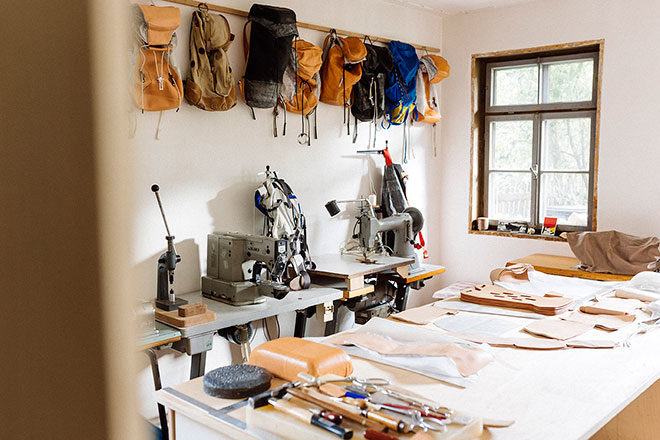
“Out here in the countryside it is possible to afford my own workshop, which is crucial to how I work. Having less financial pressure also means more freedom for trial and error.”
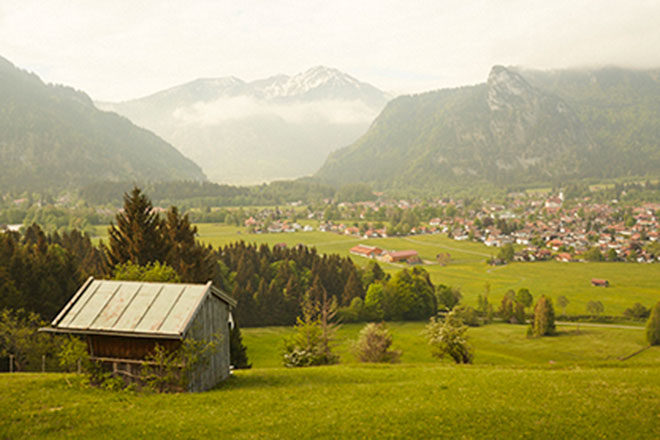
What experiences led up to the design of the Rucksack#1?
Rucksack#1 started purely from a personal interest. We’ve always been interested in making objects and have made our own since 2013, I think. It started off quite crude and simple, but since then has constantly been refined and developed. I learned that with small details such as tension locks, cord stoppers etc., it is possible to create a different, very interesting product. Since then this has always been in focus and is the reason why we make the effort of developing our own hardware.
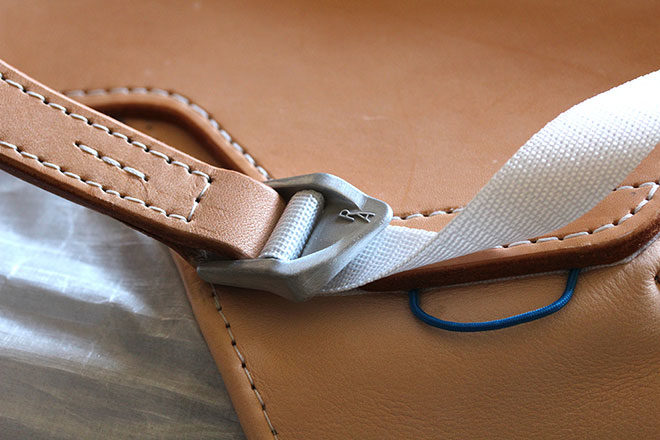
Traveling between London and the mountains at home informed the idea of the backpack ‘just being a backpack’. Intentionally I did not want to prescribe it to any sort of use or landscape. It is neither urban nor purely functional – it is ‘just a backpack’. In the same way it borrows elements from both worlds: functional aspects like fit and good distribution of weight in its shoulder straps or aesthetic values, which may be seen as more of an urban influence…
Did you consider any other materials before landing on Dyneema and leather?
It was early on that I got interested in the combination of leather and Dyneema, which was called Cuben Fiber back then and very hard to get over here in Germany. Looking for a certain aesthetic, I considered leather and Dyneema to be perfect partners – functionally and due to their quality. Over time I have learned even more what a great material leather is and developed the interest to bring out its functional qualities even more. Leather is very durable – it can be very soft or stiff and hard. This means one material (leather) can be used for various applications. As leather is “grown” and does not have a woven structure (such as most other materials) it can be shaped and folded without creasing. For example our shoulder straps show this construction where the inner layer of leather is wrapped to the outside in an inside and outside curved shape. The result is a comfortable and smooth edge of the strap. Another important functional quality of leather is the way it reacts to the user’s “climate” – given it is vegetable tanned and natural: when sweating the leather does not become hot, itchy or sticky to the body. It rather adopts similar temperatures and being point-blank feels even cooling to the body. These qualities have somewhat been forgotten, but perfectly match what I am looking for.
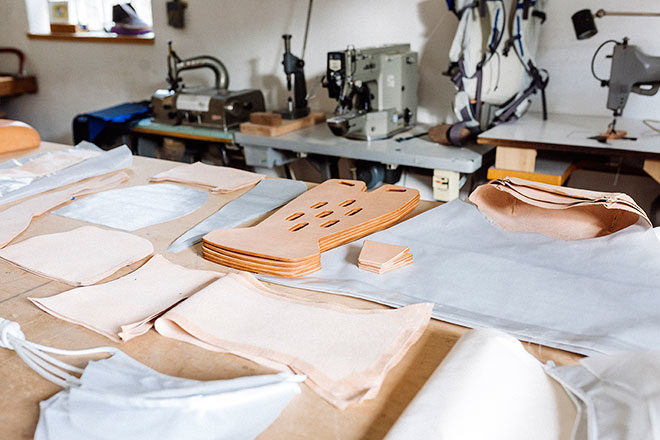
In regards to the leather work, the backpack took another leap when I got my close friend Jakob Pauli involved. Jakob is a master in saddle making and knows more about leather than anybody else I have met before. This heavily informed the functional aspects of the leather work – this is mostly apparent in the shoulder straps. Envisioning the shoulder strap with the wrapped construction (as explained above), it was Jakob’s experience in sewing and workmanship that brought it to a level that we can manufacture in multiples without compromising on quality and the comfortable fit we wanted to achieve.
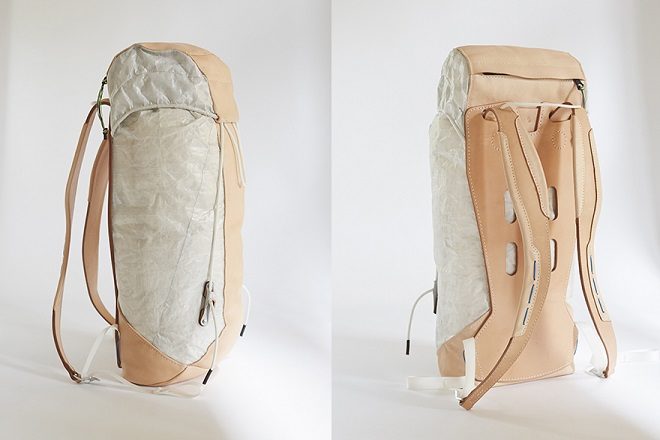
What are some of the design and usability challenges you hoped to tackle with this pack?
The major design challenge was to develop the backpack to a state that I can comfortably make more than just a one-off. As a product designer I really wanted it to be a product that is manufactured in numbers – not many obviously, but small batches. That meant a constant revising of the pattern and workmanship and trying to maintain aesthetic and functional qualities I was after.
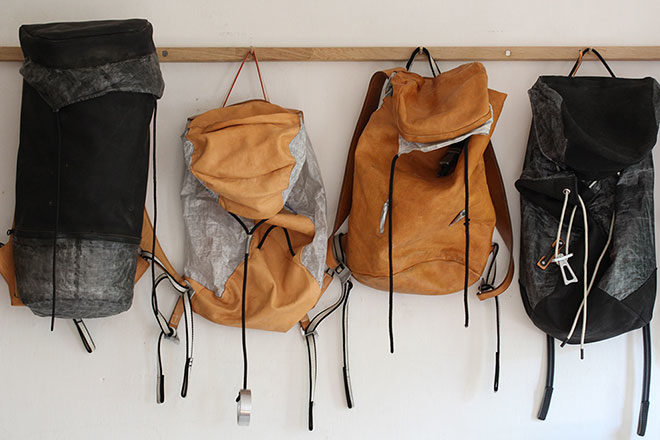
Another challenge was that I am very particular about how the bag is sold and made. This led to me sitting on the sewing machine and sewing myself…
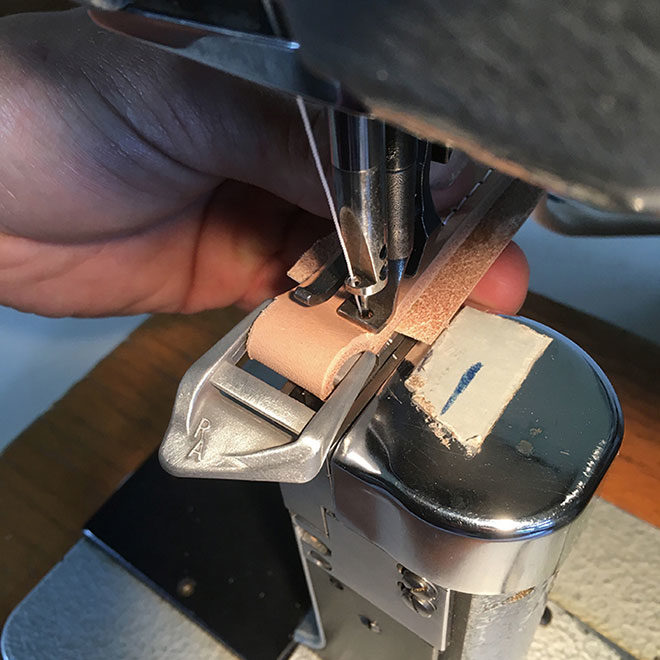
From a designer’s perspective, what is the relationship between ‘craft’ and ‘innovation’? How does the Rucksack#1 address that?
I guess this relates to my very personal approach to design or my way of working. I need the physical, real experience with the product or project at hand. Only that way I can fully understand the product or project from initial idea to concept and then a final design – if ever a design can be called ‘final’. In that sense craft is a means to help me understand the project/product. In my opinion innovation requires that deep insight and understanding. The products I work on are mostly ‘low-tech’. Rather than ‘designed innovation’ it actually develops/is born within the process when developing. The way I work that maybe means: the less ‘tech’ or functional a product is, the more important it is to fully understand the product and all factors like use, materiality, manufacturing and design. The way Rucksack#1 addresses the relationship between ‘craft’ and ‘innovation’ is mostly the way we use leather relying on its functional qualities – also as a partner to the Dyneema Composite Fabric which is said to be the lightest, yet strongest material out there. Therefore how the two materials complement one another is not only functional but made visible on an aesthetic/design level (rather than Rucksack#1 being a ‘heritage product’).
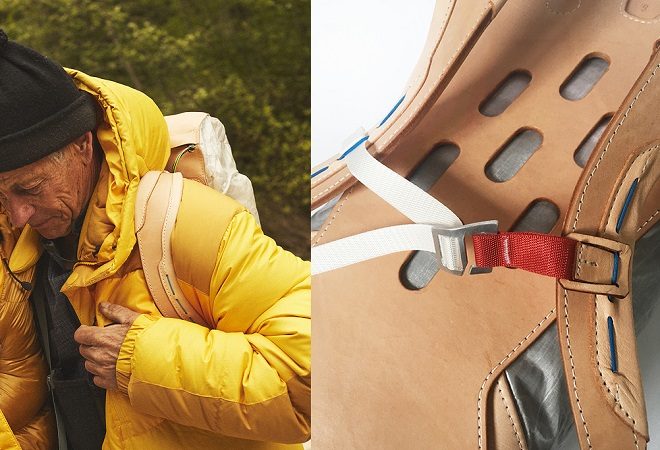
What are the biggest challenges of working at such a small scale; what are the rewards?
Probably the biggest challenge is making everything ourselves. Not only developing, designing and manufacturing, but then also to market and sell it. It is not easy to find the balance between all the factors and trying to be an expert in all relevant aspects. At the same time that means I really learn a lot in the course of that project.
Also that the industry does not really cater for small-scale businesses. It does not always make it easy to access materials etc. But with having our own hardware and a good tannery we now have a solid small list of suppliers.
“The major design challenge was to develop the backpack to a state that I can comfortably make more than just a one-off. That meant a constant revising of the pattern and workmanship and trying to maintain aesthetic and functional qualities I was after.”
Without having to compromise Rucksack#1 is just the way it should be – achieving this is a huge reward – but at the same time sometimes this means going through some pain as well.
Another reason why working at such small scale is possible is that Rucksack#1 and other products in the near future are only one part of RACING ATELIER. The other part is offering design services to clients – especially as the well equipped workshop perfectly caters for prototyping etc.
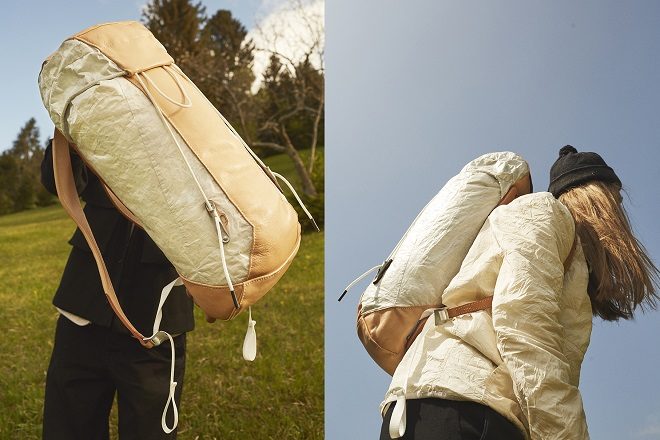
Who else is making stuff right now that you love?
Difficult to find an answer: so many people and companies make great stuff and I cannot really pick anyone specific. As I am really interested in the materiality, look and feel of a product and how it is made I rather pick up details than products as a whole. Manufacturing products myself, I always try to understand how a specific design is achieved in a process of (mass-)manufacturing. I really react to how a design is made tactile: how material properties, functional requirements and proportions (design: measurements, size, colour, construction) come to use and first draw my eye, then my fingers to touch the product. Small companies and makers catch my interest, not only for their product, but also because it appears there is more scope for individuality in their approach and business. Naturally I really enjoy well made outdoor gear – which besides using it also is always a great source of inspiration. Also art, arts and crafts, and fashion are very important creative inputs and necessary to my life.
To name a few I go back to my first visit to Japan many years ago: companies like and wander, Snow Peak or Hender Scheme were little known over here and were therefore heavily inspiring back then and I got really interested in small Japanese companies. Today my interest is more global – I feel there are small companies or makers everywhere. Currently I am interested in the US: I think there are a lot more small companies and makers left or emerging than over here. I want to visit OR show for companies like CiloGear or others, but also would like to travel around and dive deeper into this aspect of US culture.
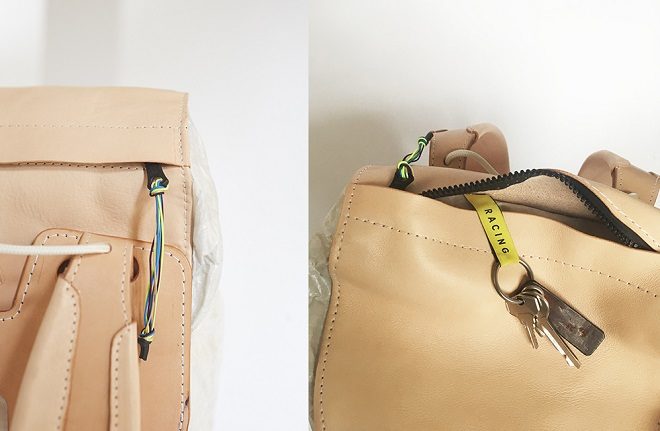
What is next for Racing Atelier?
One of the major goals of RACING ATELIER has always been to share our passion and interest in designing and making things with others. It is an ongoing venture to make RACING ATELIER known for a few thoughtfully created products as well as a design studio sharing expertise and experience with others – be it in a product or a design project.
For product in the near future next is to have a few other products besides Rucksack#1 – for example will there be a mountain version of Rucksack#1. Just as with Rucksack#1 any product that comes next has to reflect our interest/take on design and reflect the ethos of RACING ATELIER.
For now thank you very much for your interest and time!
Follow Racing Atelier on Instagram
This interview was conducted by new contributor, Bradley Woody; itinerant illustrator, minimalist, and long-time carry geek. Welcome to the team, Bradley!
Enjoyed the above article? You may like these too:
5 Minutes with Bleu de Chauffe
QWSTION: Is Bananatex the Next Miracle Backpack Fabric?





 Carry Awards
Carry Awards Insights
Insights Liking
Liking Projects
Projects Interviews
Interviews
